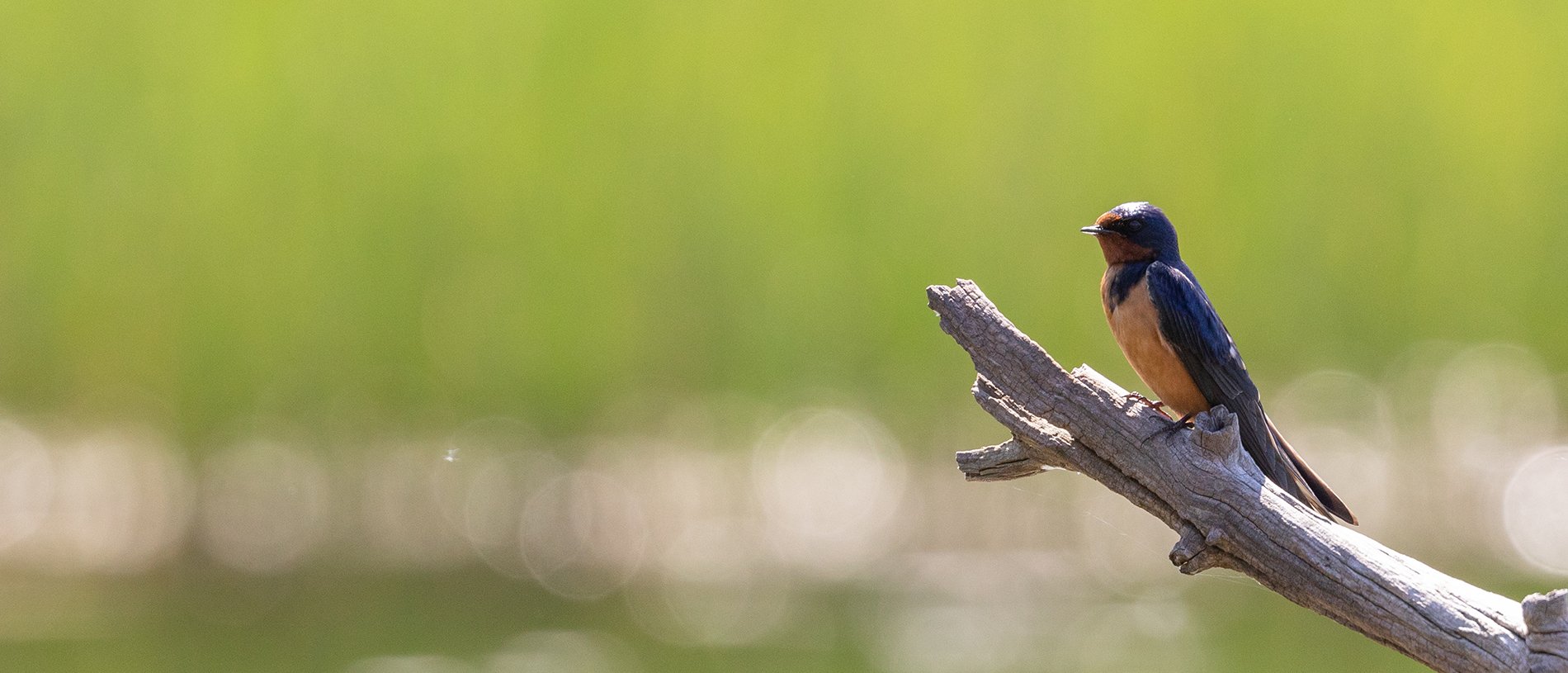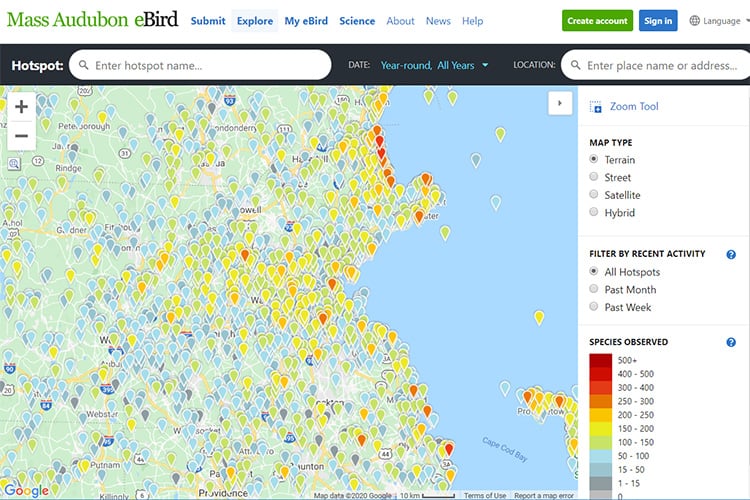Community Science
Mass Audubon on eBird
Mass Audubon has partnered with the Cornell Lab of Ornithology to promote eBird, a free online platform that lets birders record and share their observations while also contributing vital data to our bird conservation programs.
But eBird is about much more than just checklists!
You can also search the database to find out what other birders are seeing across Massachusetts (and beyond), and when and how often various species are seen. If you're planning a trip, you can view a list of all the species recorded at your destination.
Benefits of eBird
The data that birders submit to eBird becomes a powerful tool for bird conservation. It helps scientists uncover patterns in bird distribution and movement, which is critically important in the face of threats such as climate change. This information enables Mass Audubon and other conservation groups to make the best action plans for species in trouble.
How to Use eBird
Start eBirding with just a few easy steps:
- Keep track of your bird sightings wherever and whenever you can.
- Connect with Mass Audubon on eBird.
- Tell us where you went birding. Select the "Submit Your Observations" tab. You may be able to find your location in our Wildlife Sanctuary or Important Bird Area list; otherwise, you can enter the latitude and longitude directly, find the location on the interactive map, or just report your observations at the county or city level.
- Describe how and when you were birding. Choose an "Observation Type" such as casual observation, stationary count, and so on. Then, tell us the time, distance, number of people in your party, and any other useful information that the system asks you for.
- Tell us what you saw and heard. Enter the number of individuals of each species that you observed. Be sure to include a complete list of everything you saw (no matter how common). This enables scientists to also identify what is not being seen.
- See what others have seen and heard. Select a town under "Most Checklists for Current Month" and see which birds are being reported and when.
These are the basics, but make sure you explore the whole site—you’ll find a wealth of information to enhance your birding experience.




